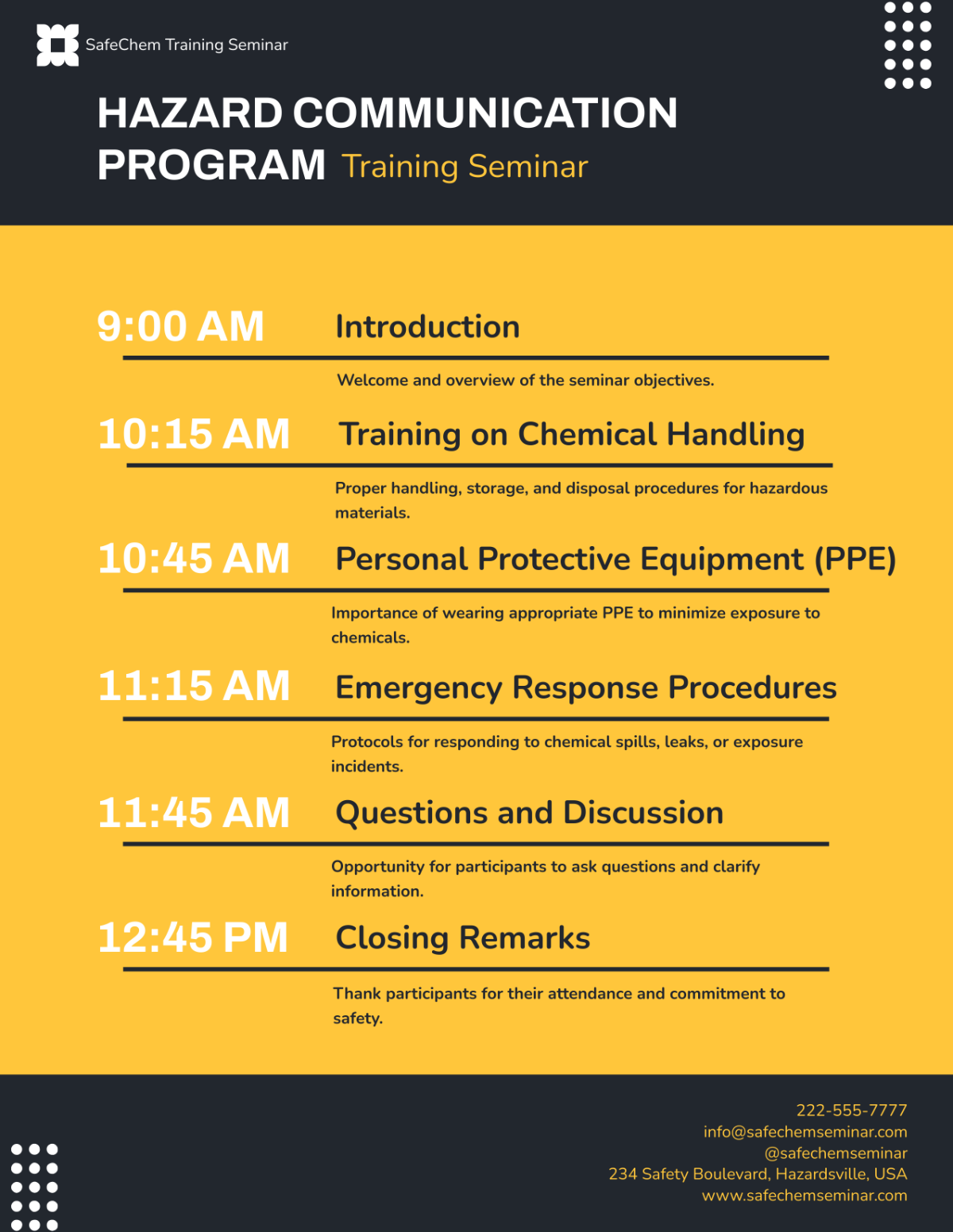Sales SWOT Analysis Of Onboarding Programs
Introduction
Onboarding programs represent a pivotal initial phase in the employee journey, serving as a foundational element that not only establishes the tone for new employees' experiences but also plays a critical role in influencing their productivity, engagement, and overall job satisfaction. Acknowledging the profound impact of these programs, [Your Company Name] places a premium on the development and implementation of a well-structured onboarding initiative.
Within the framework of this Sales SWOT (Strengths, Weaknesses, Opportunities, and Threats) analysis, we embark on an in-depth examination of [Your Company Name]'s onboarding programs. This analysis aims to provide a comprehensive evaluation of the current efficacy of these programs while also identifying avenues for strategic enhancements and optimization.
Onboarding Program Efficacy
This section delves into the effectiveness of the current onboarding programs employed by [Your Company Name], assessing the extent to which they align with best practices and fulfill the intended objectives. This analysis will offer insights into the strengths of the program, highlighting areas where [Your Company Name] excels in facilitating a smooth transition for new employees into their roles and the company culture.
Areas for Onboarding Program Enhancement
Building upon the assessment of the program's efficacy, this segment identifies and explores potential areas for improvement within [Your Company Name]'s onboarding process. Consideration will be given to both internal feedback from recent hires and comparative benchmarks against industry standards. The aim is to outline actionable recommendations that [Your Company Name] can implement to elevate the onboarding experience, thereby enhancing overall employee engagement and retention.
Strengths
In the comprehensive analysis of [Your Company Name]'s strategic positioning, the Strengths component elucidates the internal capabilities and resources that furnish the organization with a competitive advantage. This section delves into the intricacies of the company's onboarding process, technology integration, and dedicated team support. These elements collectively contribute to the optimization of employee induction and retention strategies, fortifying [Your Company Name]'s standing in the industry.
Structured Onboarding Process
[Your Company Name] has a well-structured onboarding process that guides new employees through various stages. This structure ensures that employees are introduced to the company's culture, values, and specific roles.
Integration of Technology:
The company leverages technology to facilitate onboarding. This includes e-learning modules, onboarding software, and digital documentation, which streamlines the process and provides a modern and efficient experience for new hires.
Dedicated Onboarding Team
[Your Company Name] has a dedicated team responsible for onboarding, ensuring that new employees have a point of contact to address their queries and concerns. This enhances the overall experience.
Feedback Mechanisms
The onboarding program incorporates feedback mechanisms, allowing new employees to provide input on their experience. This feedback is used to refine and improve the program continuously.
Emphasis on Company Culture
[Your Company Name] places significant importance on introducing new hires to its corporate culture. This helps employees align with the company's values, leading to better job satisfaction and retention.
Weaknesses
In the comprehensive evaluation of [Your Company Name]'s onboarding program, particular aspects emerge that signify areas requiring attention and recalibration. These weaknesses, if left unaddressed, have the potential to undermine the efficacy of the onboarding process, affecting not only the speed at which new employees reach full productivity but also their initial perception and experience of the company. Below, we detail these critical points of concern and underscore their implications.
Lengthy Onboarding Period
One of the weaknesses of [Your Company Name]'s onboarding program is its length. The process can be time-consuming, which may lead to delays in new employees becoming fully productive in their roles.
Aspect
Detail
Impact
Duration
Extended beyond industry norms
Delays in achieving full productivity
Limited Flexibility
The onboarding program has limited flexibility to cater to the diverse needs of new employees. A more personalized approach could be beneficial, especially for experienced hires.
Aspect
Detail
Impact
Customization
Lack of personalization in the program
Inefficient learning for experienced hires.
Overemphasis on Technology
While technology integration is a strength, there can be an overreliance on it. This may lead to a lack of personal interaction, which is essential for building relationships and fostering a sense of belonging among new employees.
Inadequate Focus on Soft Skills:
The program primarily focuses on technical skills and job-specific training. Soft skills training, such as communication and teamwork, is not given enough attention, which can impact overall job performance.
Inconsistent Evaluation
[Your Company Name] lacks a standardized evaluation system for onboarding. This makes it challenging to measure the program's effectiveness accurately.
Recommendation for Improvement
To ameliorate these weaknesses, [Your Company Name] should consider integrating more flexible, modular elements into its onboarding program. These modifications would not only expedite the transition for new employees to become fully productive but also cater to a broader spectrum of needs, enhancing satisfaction and retention rates. By acknowledging and acting upon these areas for improvement, [Your Company Name] can significantly bolster its onboarding strategy, ultimately benefiting both the organization and its new members.
Opportunities
In the evolving landscape of employee onboarding, [Your Company Name] stands at the threshold of several transformative opportunities. These prospects aim to elevate the onboarding experience, aligning it more closely with the unique backgrounds and aspirations of each new hire, while simultaneously enhancing organizational cohesion and efficiency. Below, we articulate these opportunities and propose ways in which they could be systematically implemented.
Adaptive Onboarding
[Your Company Name] has an exciting opportunity to transform its onboarding programs into adaptive and personalized experiences for each new hire. By recognizing that not all employees have the same background, skills, and needs, the company can tailor the onboarding process to match individual requirements. This adaptive approach could help employees feel more engaged, valued, and well-prepared for their roles.
Mentorship Programs
The introduction of mentorship programs is another promising avenue for enhancing the onboarding experience at [Your Company Name]. Assigning experienced employees as mentors to new hires can provide invaluable guidance, support, and a friendly face in the organization. Mentorship can help newcomers navigate company culture, job responsibilities, and interpersonal relationships more effectively.
Cross-Functional Training
To foster a more collaborative and interdisciplinary work environment, [Your Company Name] can consider cross-functional training as an opportunity within their onboarding process. This approach encourages employees to gain exposure to various departments and roles within the company. By broadening their skill sets and understanding of different aspects of the business, employees can contribute more effectively to the organization.
Gamification
Gamification has become a prominent trend in the realm of onboarding programs. [Your Company Name] can capitalize on this opportunity to make its onboarding process more engaging and interactive. By incorporating game elements, such as challenges, quizzes, or progress tracking, the company can create a more enjoyable and motivating learning experience for new employees.
Certification and Recognition:
The introduction of certifications and recognition for completing specific milestones or stages of the onboarding program is an opportunity to motivate and incentivize new employees. [Your Company Name] can design a system where employees receive certificates or badges as they successfully complete different phases of their onboarding journey.
Remote Onboarding
In the age of remote work, there's an excellent opportunity for [Your Company Name] to adapt its onboarding programs for virtual environments. This includes refining the remote onboarding process, creating engaging virtual onboarding content, and providing clear guidelines for remote employees. As more companies embrace remote or hybrid work models, [Your Company Name] can gain a competitive edge by delivering a seamless and effective remote onboarding experience.
Metrics and Measurement:
By systematically establishing and rigorously monitoring a set of carefully chosen Key Performance Indicators (KPIs), the organization can unlock profound insights into the operational success and areas for improvement within its onboarding initiatives. This analytical approach not only illuminates the effectiveness of the current processes but also facilitates a continuous improvement cycle, ensuring the onboarding experience remains both dynamic and aligned with evolving organizational goals and employee expectations.
Metric | Purpose |
|---|---|
Employee Retention Rates | To assess the long-term impact of the onboarding process on employee retention and organizational loyalty |
By leveraging these metrics, [Your Company Name] can cultivate a robust framework for continuous onboarding enhancement, ensuring that each new cohort of employees is met with an experience that not only prepares them for immediate success but also nurtures their long-term development and integration within the company. Through this strategic emphasis on data-driven insights, [Your Company Name] commits to a perpetual evolution of its onboarding practices, aligning them more closely with the overarching objectives of organizational growth, employee satisfaction, and operational excellence.
Threats
[Your Company Name] faces several external challenges that could potentially undermine the effectiveness and efficiency of its onboarding programs. Acknowledging and addressing these threats is crucial for maintaining the company’s position as an employer of choice and ensuring the seamless integration and retention of new talent. Below is an enhanced analysis of the key threats and their implications for [Your Company Name].
High Turnover
In the technology industry, where talent is in high demand, a subpar onboarding experience can lead to high turnover rates. Competitors with better onboarding programs may attract [Your Company Name]'s talent.
Legal Compliance
Inadequate attention to legal and compliance issues in the onboarding process can lead to costly legal troubles for the company.
Market Shifts
Rapid changes in technology or market conditions can render the onboarding program outdated, necessitating frequent updates to stay relevant.
Competition
Rival companies may develop more innovative and effective onboarding programs, making it challenging for [Your Company Name] to attract top talent.
Remote Work Challenges
As remote work becomes more common, onboarding programs must adapt to the virtual environment. Failure to do so could result in difficulties in integrating remote employees effectively.
Recommendations
Based on the comprehensive SWOT analysis conducted on [Your Company Name]'s onboarding program, a series of strategic recommendations are proposed to fortify the program against identified weaknesses and threats while capitalizing on the available strengths and opportunities.
Personalize the Onboarding Experience
Implement adaptive onboarding pathways that tailor content and training modules to individual roles, experiences, and learning paces. Utilize data analytics to continuously refine these pathways, ensuring they meet the unique needs of each new hire, thereby enhancing job satisfaction and reducing turnover rates.
Strengthen Legal and Compliance Frameworks
Integrate comprehensive legal and compliance training into the onboarding process, focusing on both global standards and local regulations relevant to the employee's role and location. Regularly review and update these modules to reflect the latest legal developments, minimizing the risk of compliance violations.
Foster a Culture of Continuous Learning
To address the rapid pace of market and technological changes, embed a culture of continuous learning within the onboarding program. Encourage new hires to engage in ongoing professional development through workshops, courses, and cross-functional projects, ensuring skills remain current and relevant.
Implement Mentorship and Support Networks
Expand the mentorship program to include not only role-specific guidance but also support for navigating the company culture and building professional networks. This will enhance the onboarding experience, promote higher engagement levels, and facilitate smoother integration into the company.
By implementing these recommendations, [Your Company Name] can significantly enhance its onboarding program, making it a strategic asset in attracting, developing, and retaining talent. This will not only improve the immediate integration and productivity of new hires but also contribute to the long-term success and competitiveness of the company in the dynamic technology industry.
Conclusion
A Sales SWOT analysis of [Your Company Name]'s onboarding programs has revealed several strengths and weaknesses that, if addressed, can lead to opportunities for improvement. To mitigate threats such as high turnover and the changing landscape of remote work, [Your Company Name] should focus on creating adaptive onboarding processes that cater to the unique needs of each employee, fostering a culture of mentorship, and staying agile in response to market shifts. By doing so, [Your Company Name] can enhance its onboarding programs and ultimately bolster its position in the competitive technology industry.

















































